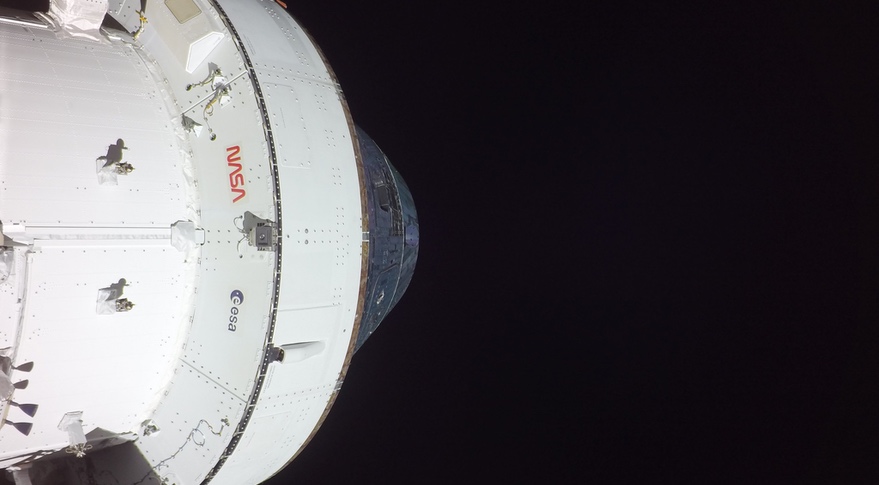WASHINGTON — The successful launch of the Artemis 1 mission comes just in time for the European Space Agency as it seeks support from its member states for new exploration initiatives.
ESA supplied the service module on the Orion spacecraft that provides power, propulsion and other services. That service module has been performing well since launch ahead of a critical maneuver, the Outbound Powered Flyby, by the service module’s main engine scheduled for early Nov. 21.
“The propulsion system will be one of the subsystems that we will have a close eye on,” said Philippe Deloo, European Service Module program manager at ESA, during a pre-launch interview at the Kennedy Space Center. Of concern, he said, were valves that were not working exactly as desired, but he said engineers had developed a workaround that should allow the propulsion system to perform as required.
The European Service Module (ESM) on Artemis 1 is the first of six ESA has currently agreed to provide, with Airbus Defence and Space serving as the prime contractor. ESM-2 was delivered to KSC last year, with ESM-3 and -4 under construction at an Airbus facility in Bremen, Germany.
“The efficiencies are much better” on the later service modules, Deloo said, with a series of improvements in each one produced. “The team has gotten into a routine where they process things much faster, but there are still a number of things to resolve and to improve.”
There will be more changes to the ESM with ESM-4, which will be used on the Artemis 4 mission. That is the first to launch on the Space Launch System Block 1B rocket, whose additional performance will enable Orion to deliver co-manifested payloads, like lunar Gateway modules. Deloo said those modifications include changing the angle of reaction control system thrusters to accommodate the additional mass when Orion is docked to those co-manifested payloads while avoiding thruster plumes hitting the service module’s solar arrays.
He said ESA’s goal is to get into routine production of the service modules starting with ESM-4, with a goal of producing one service module a year to match the cadence of later Artemis missions. “We’re not there yet, but that is eventually the goal we will reach starting with ESM-4 onwards.”
At the ESA ministerial council meeting in Paris Nov. 22-23, the agency will seek approval from its member states for three more service modules, ESM-7 through -9. “My target is to place a contract with industry next year” for those three service modules, he said.
The successful Artemis 1 launch is good timing for the ministerial, where ESA will request funding for other exploration initiatives, such as a lunar cargo lander and a lunar communications and navigation network.
“It would be a tremendous signal that, yes, we are going and we have a viable program,” Deloo said. “That’s want the ministers want to see.”
ESA released Nov. 15 the results of a poll of residents of ESA member states conducted by Harris Interactive. The poll found that climate change, exploration and space science, and space debris were top priorities Europeans had for the space agency.
“I’ve been quite encouraged with what I saw,” Josef Aschbacher, ESA director general, said in an online briefing about the poll results, noting they were in line with the agency’s priorities going into the ministerial meeting. “I’m very reassured that what we hear from the population is fully in line with our overarching strategy of ESA but also the ministerial conference.”
That includes exploration and space science, which was second only to climate change in the poll results. “I’m quite happy to see that,” he said, “because there is a strong package for the ministerial.”
